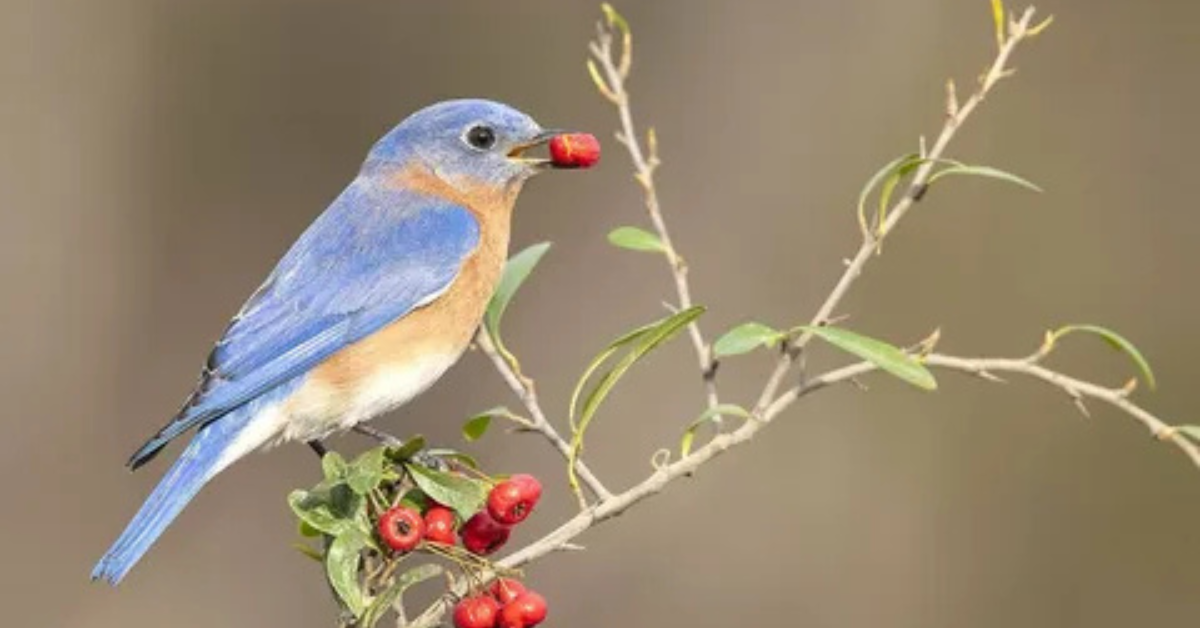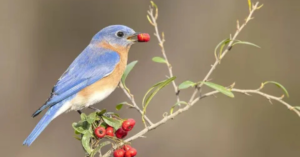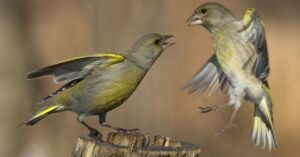In the world of avian wonders, few birds capture the heart quite like the Female Eastern Bluebird. With its stunning iridescent plumage and melodic song, this small thrush is often celebrated for its vibrant males. Lurking in the shadows of their more colorful counterparts are the equally fascinating female Eastern bluebirds, whose traits and habits offer a captivating glimpse into their lives.
Female Eastern bluebirds may lack the striking azure hues of males, but they boast unique characteristics that are just as intriguing. Their muted coloration serves a vital purpose camouflage against predators while they nurture eggs or feed young chicks in hidden nests.
What Does a Female Bluebird Look Like?
The eastern bluebird female, a marvel of nature’s palette, displays subtle beauty that captivates bird watchers and casual observers alike.
Female eastern bluebirds are fascinating for their role in their ecosystem. They may not be as flamboyant as males during courtship displays—where those vivid blues become irresistible—but they offer unique advantages in attracting mates through their nurturing behaviors.
Distinguishing Male and Female Bluebirds
When you first encounter bluebirds, distinguishing between the male and female can be a delightful challenge. Males are adorned with vibrant shades of cobalt blue on their wings and head, contrasted with a warm chestnut hue on their throat and belly. This striking plumage not only serves as a visual feast for bird watchers but also plays a crucial role in attracting females during the breeding season.

Female bluebirds exhibit more subdued colors—marked by soft grayish-brown tones that are beautifully understated yet equally captivating. This muted palette is not merely for aesthetics; it offers essential camouflage while nesting or tending to young ones.
Male Bluebird Photo
The male bluebird epitomizes avian beauty and charm. This dazzling color scheme serves not only to capture the attention of potential mates but also plays a critical role in territorial displays. These birds flit gracefully through open fields and gardens, they often perch on fences or low branches, offering photographers golden opportunities for breathtaking captures under varying light conditions.

Photographing a male bluebird reveals more than just aesthetic appeal; it highlights intricate behaviors that may go unnoticed at first glance. For instance, when males engage in their melodious song during courtship or while defending territory, they create dynamic visual narratives enriched by both sound and movement.
Female Bluebird Photo
The female Eastern bluebird may appear subdued when compared to her vibrant male counterpart, but her beauty lies in the subtlety of her soft, warm hues. Sporting a gentle blend of tawny and muted blue feathers, she often blends seamlessly with the natural environment—making her sightings all the more special for keen observers.
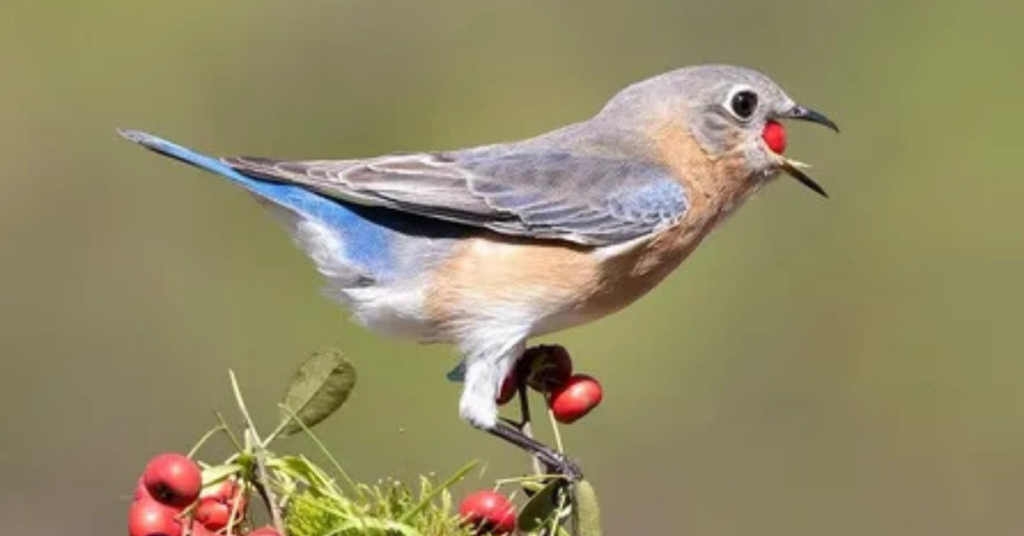
Capturing an image of a female bluebird requires not just technical skill but also patience and an understanding of their behavior. Photographers often find success by using low-light conditions during early mornings or late afternoons when these birds are most active yet less likely to spook from nearby disturbances.
What does a bluebird sound like?
The bluebird’s song is a melodic delight that captures the essence of spring. Their cheerful call consists of a series of clear, bell-like notes that resonate with joy in the crisp morning air.
Male eastern bluebirds often deliver distinct courtship calls to attract females with short trills followed by confident chirps that exude vitality and enthusiasm. Female bluebirds offer softer notes as they communicate with their partners or maintain contact with their young.
Explore the info about: How To Keep Bees Away From Hummingbird Feeders
What Are the Habits and Characteristics of Female Bluebirds?
Female bluebirds exhibit a fascinating blend of nurturing behavior and independent spirit. Female bluebirds play an active role in building their nests. They often seek out cavities in trees or manmade structures to create a home for their future offspring, meticulously assembling it using grasses, feathers, and other natural materials to ensure warmth and safety for the young chicks.
Female bluebirds are known for their distinctive vocalizations that serve multiple purposes. While they may not sing as melodically as males during courtship displays, they communicate crucial information through soft calls that can alert mates or signal alarm in the presence of predators.
Where Can Female Eastern Bluebirds Be Commonly Found in the US?
Female Eastern Bluebirds across the eastern United States, ranging from open fields and meadows to lightly wooded areas. These delightful birds favor regions with scattered trees and shrubs, as these provide essential perching spots for hunting insects and spotting potential nest sites.
Their presence is particularly abundant in areas with favorable nesting structures such as old fence posts or bluebird boxes, which many enthusiasts have installed throughout suburban neighborhoods and rural landscapes.
Do Male and Female Bluebirds Nest Together
Male and female bluebirds come together not just for mating but also for nest-building, showcasing a rare example of collaboration in avian life. While males court females with vibrant displays and cheerful songs, it is the pair that works jointly to construct their nest, typically tucked away in tree cavities or man-made boxes.
Both parents are actively involved in tending to the eggs and feeding the chicks once they hatch. The male often takes on the role of protector and provider, while the female focuses on incubation and nurturing.
Monogamy and Sexual Diversity of Bluebirds
Monogamy takes center stage, particularly during the breeding season. These vibrant avian creatures are known for forming strong pair bonds that typically last for several seasons. Bluebirds exhibit a range of mating strategies beyond mere monogamous partnerships; some individuals engage in extra-pair copulations, allowing them to enhance genetic diversity in their offspring a testament to nature’s intricate balancing act between stability and variability.

Bluebirds Nesting and Breeding
Bluebirds, with their vibrant plumage and melodious songs, bring joy to many backyards as they embark on their nesting and breeding season. These small birds typically prefer open fields punctuated by sparse trees, which offer both food sources and shelter for raising their young.
Once paired, the female will lay between three to six eggs evenly spaced over several days; this strategy ensures synchrony in hatching and subsequent feeding cycles. After about two weeks of diligent brooding where the female remains mostly sedentary while the male dutifully gathers food the chicks emerge into a world filled with promise yet dependent on parental care for survival.
Where Do Eastern Bluebirds Live?
Eastern bluebirds thrive across a diverse range of habitats, primarily found in open woodlands, fields, and suburban areas throughout eastern North America. These charming birds have adapted remarkably well to human environments, often seen perching on fence posts or flitting between backyard gardens. Their preference for open spaces allows them to hunt for insects, their primary food source during warmer months.
How Can I Attract Female Eastern Bluebirds to My Garden?
To attract female Eastern Bluebirds to your garden, consider cultivating an inviting environment that mimics their natural habitats. These birds thrive in open expanses dotted with ground cover, so a mix of short grass and native wildflowers provides an ideal foraging ground while offering safety from predators. Avoid pesticide use; instead, encourage insects by planting diverse flowering species to serve as mini-ecosystems rich in food sources.
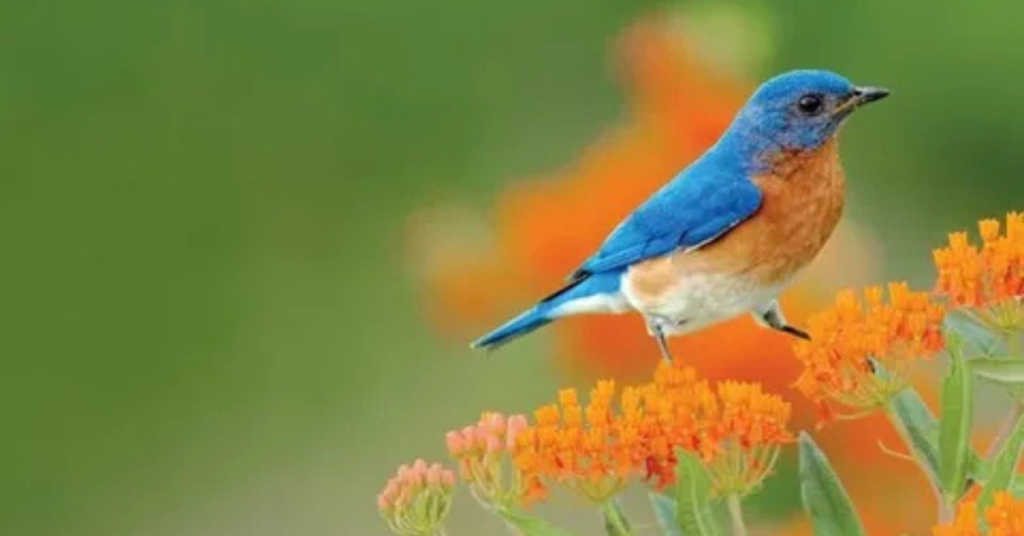
Position them near meandering trails or the edges of woodland areas for increased visibility. Ensure the boxes are mounted on sturdy poles at least five feet high and away from dense vegetation where larger predators might lurk.
Where Do Bluebirds Like to Stay?
Bluebirds are typically drawn to open spaces that offer a harmonious blend of trees and grasslands, making them a quintessential part of American landscapes. They favor habitats such as farmlands, orchards, and suburban areas where low grasses intermingle with tall perches like fences or trees.
Bluebirds also appreciate human-made structures as potential nesting sites. Bluebird houses have become a popular backyard project among enthusiasts looking to attract these vibrant birds. When placed in the right environment facing away from prevailing winds and near feeding opportunities a well-placed birdhouse can quickly become home sweet home for a bluebird family.
What Do Bluebirds Like to Eat?
Bluebirds are not only a delight to watch flitting about in gardens and meadows but also have specific dietary preferences that can make attracting them a rewarding endeavor for avid bird enthusiasts. A well-placed dish of live or dried mealworms can create an irresistible feast that draws them close to your yard.
Bluebirds are drawn to berries such as blueberries, blackberries, and strawberries. Setting up native berry-producing plants like elderberry or serviceberry will not only beautify your outdoor space but also serve as a natural buffer for these avian visitors. Offering suet cakes laced with seeds or fruit bits can provide an additional energy source during colder months when other food sources become scarce.
Conclusion
The traits and habits of female Eastern Bluebirds provide valuable insights into their role within the ecosystem and their unique behaviors. These captivating birds exhibit a range of characteristics, from their striking plumage to their nurturing tendencies during the breeding season. By appreciating these beautiful creatures and their ecological significance, we can foster a deeper connection with nature.
FAQ’s
Are Bluebirds Good Or Bad Luck?
Much like red cardinals, the symbolic meaning of bluebirds runs deep. “Bluebirds are considered a good sign that good luck is just around the corner,”.
- Female Eastern Bluebirds - March 25, 2025
- Keep Ants Away From Hummingbird Feeders - March 25, 2025
- A Guide To Oriole Feeders - March 25, 2025
